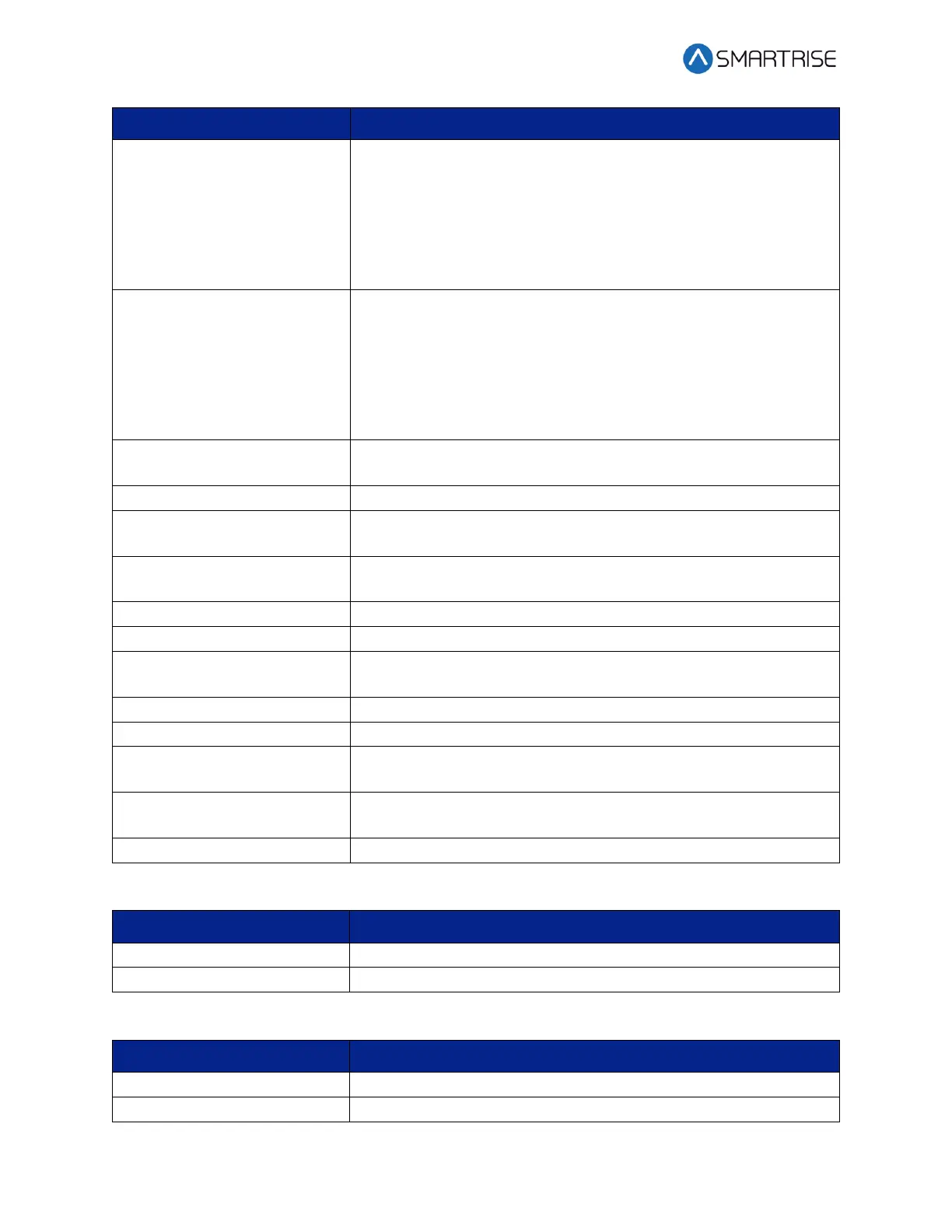Hydro:Evolved User Manual
Page 194 © 2022 Smartrise Engineering, Inc. All Rights Reserved October 2022
At a central control console, a distress and light buzzer is provided
for each elevator and an acknowledge button common to all
elevators. Pressing the distress alarm button, triggering the
emergency stop switch, if a dispatched car remains at a landing
for >30 seconds, or if the electrical safety circuit is open, will turn
on the distress light and pulse the distress buzzer. The Distress
light will remain lit until the acknowledge button is pressed.
At a central control console, a distress and light buzzer is provided
for each elevator and an acknowledge button common to all
elevators. Pressing the distress alarm button, triggering the
emergency stop switch, if a dispatched car remains at a landing
for >30 seconds, or if the electrical safety circuit is open, will turn
on the distress light and pulse the distress buzzer. The Distress
light will remain lit until the acknowledge button is pressed.
Holds car on EMS Phase 2 operation after activation of EMS Phase
1 operation.
Bypasses car call security on all floors.
Enables all car call front buttons, bypassing car call security on all
front car call buttons.
Enables all car call rear buttons, bypassing car call security on all
rear car call buttons.
Bypasses hall call security on all landings.
Puts car on independent service operation.
Analog load weigher signal indicating weight below configured
threshold. Used for anti-nuisance features.
Puts the car on marshal mode operation.
Puts car on Sabbath operation where car will automatically move
to configured floors and cycle doors, without user intervention.
Puts car on swing operation, removing the car from regular group
calls and allowing it to take swing hall calls.
Puts the car on wander guard operation.
Table 31: Description of Car Call (Front and Rear) Inputs
Table 32: Description of Car Call (Front and Rear) Inputs
Used to enable/disable front car call buttons.
Used to enable/disable rear car call buttons.
